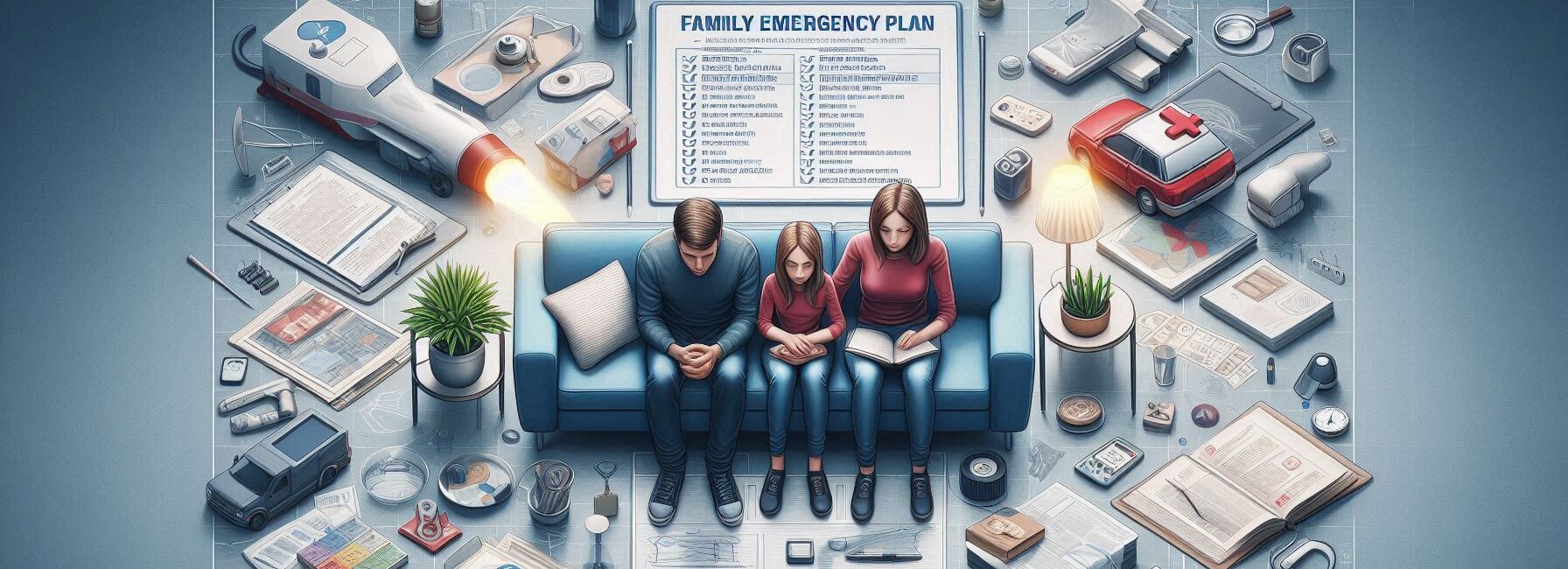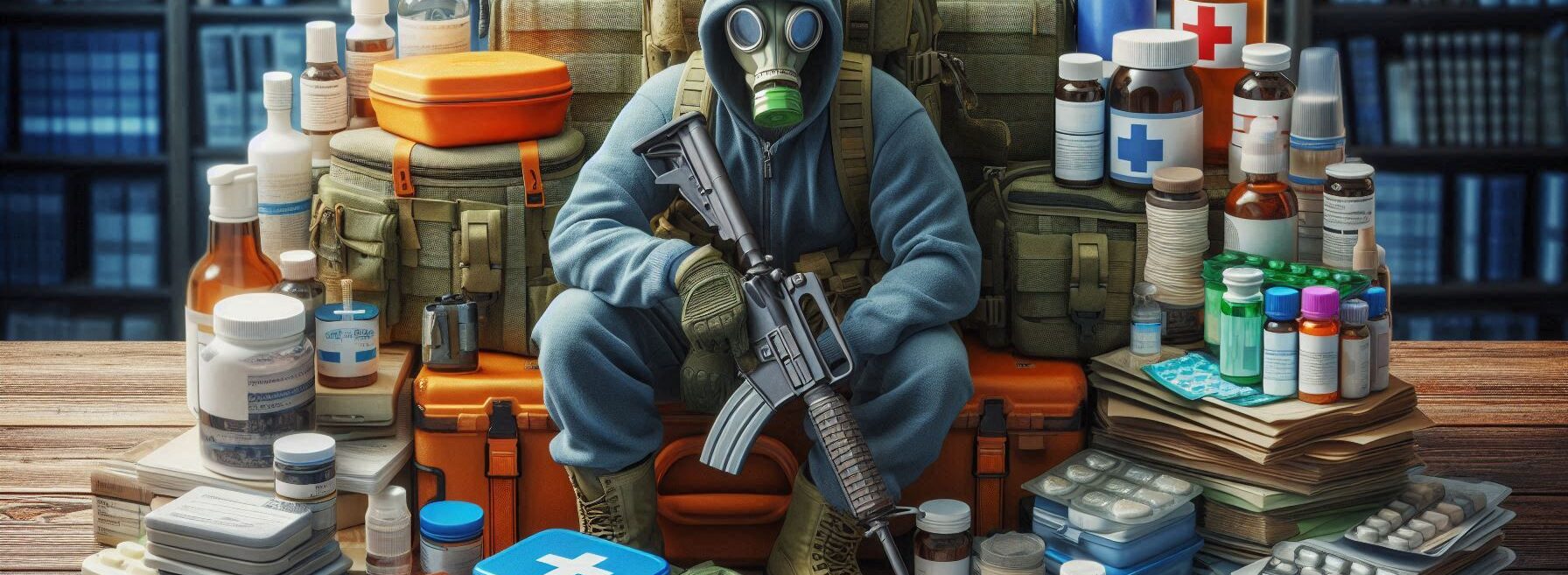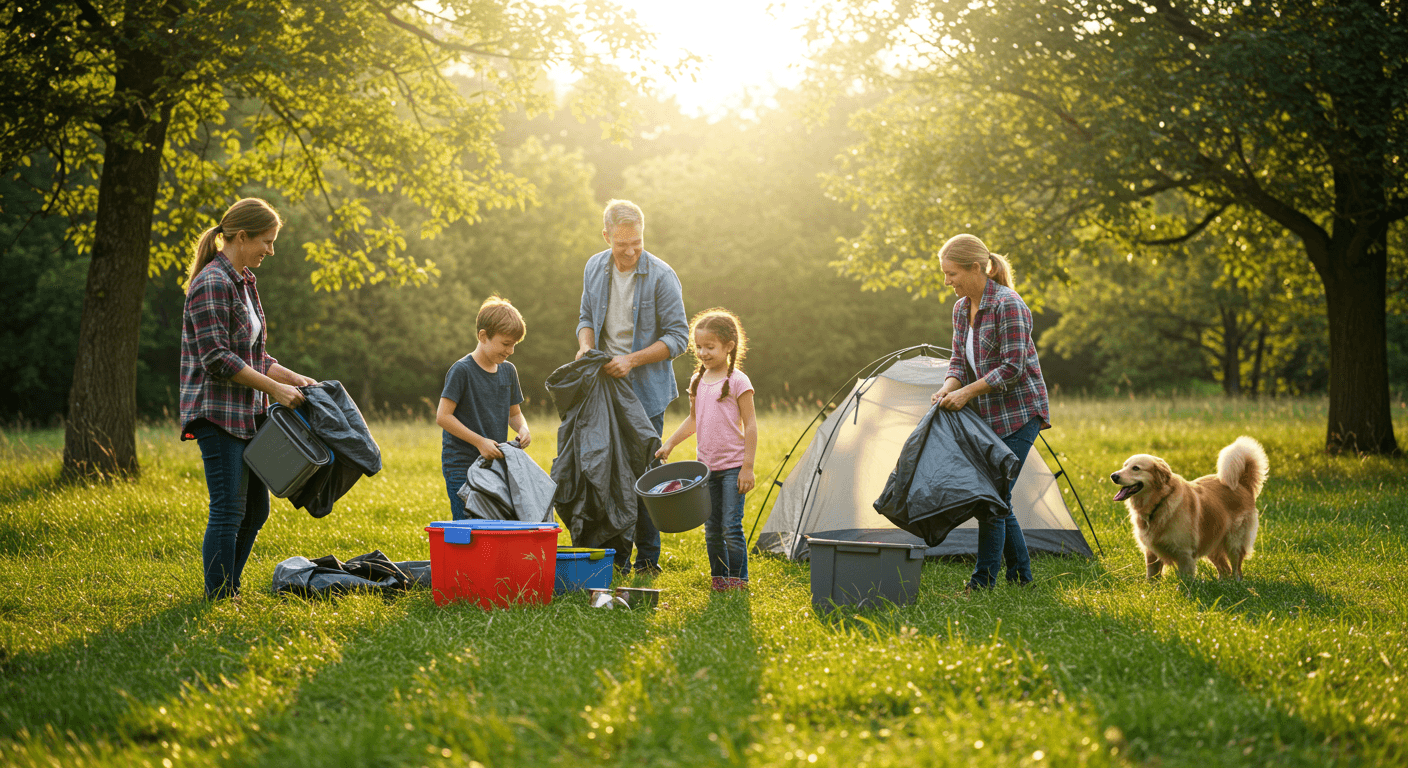Please Note: This post may contain affiliate links. If you click one of them, we may receive a commission at no extra cost to you. As an Amazon Associate, I earn from qualifying purchases.
Last Updated on November 2, 2025 by Kevin Collier

Top Takeaways and Key Concepts
- Identify local risks and hazards to tailor your home emergency plan effectively.
- Create a simple family plan with meeting spots and backup communication methods.
- Stock non-perishable food, water, first aid, and batteries for at least several days.
- Secure doors, windows, and important documents to protect against intrusions and damage.
- Practice emergency drills regularly with all household members to build confidence and readiness.
Ah, home sweet home! You can take off your shoes, eat snacks without anyone looking at you funny, and watch all of your favorite shows in your pajamas. Heaven, right?
But things don't always go as planned. What if a storm knocked off the power, or Aunt Edna came over without telling you? It's really important to get your property ready for surprises. It makes things a little easier.
So, get a snack. How about something with chocolate in it? Let's talk about getting your home ready for whatever life throws your way.
Get started with the basics. Think about food and drink. Get some goodies that you truly like. It's also a good idea to have canned items. How about some peanut butter? It tastes great and lasts a long time. Just picture you and your friends snuggling up with munchies while the storm clouds move in.
What about blankets that are warm? The soft ones that make you feel safe and comfortable. Putting a few in a convenient place can definitely help. You can feel good when it's cold outside. It's all about feeling good.
Don't forget to bring candles or flashlights. You'll need some light if the power goes off. And let's be honest: candles can make everything feel a little warmer and cozier, even when it's dark.
Also, make a plan for when things go wrong. No, it doesn't have to be really formal. Just a simple plan on what to do if things go wrong. Discuss it with your family or housemates. For example, “If the lights go out, meet in the living room!” Knowing what to do makes everyone feel safer.
Make sure your first aid kit is full. A few pain medications, ointment, and band-aids. You never know when you might need a hand. It's like having a small safety net at home.
What if Aunt Edna turns up out of the blue? Simple. Give her a smile and one of your favorite treats. You will have a warm house, and she might even bring a surprise treat!
*** Shop for Survival Gear - Tools - Kits ***
Survival Gear - Bags and Backpacks - Knives - Boots/Footwear - Communication
Outdoor Cooking - Gloves - Hydration - Dry Boxes - Water Filtration Systems
Tents - Sleeping Bags - First Aid Kits - Multi-Tools - Flashlights - Fire Starters
Navigation - Survival Food - Night Vision - Headlamps - Stun Guns - Binoculars
You don't have to make getting your place ready a chore. It can be fun, like getting ready for a small adventure. These small steps will help you stay calm when things don't go as planned. And who knows? You might find that it makes being home even better! 🍪🏠✨
1. Assessing Your Risks: What Could Go Wrong?
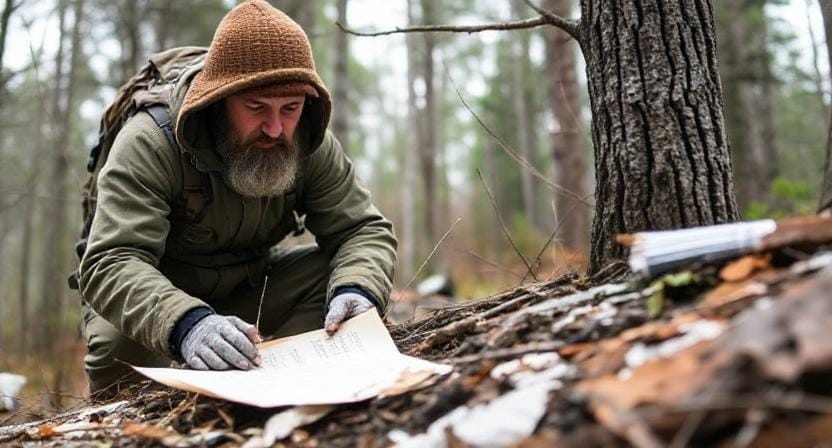
First things first: what kind of emergencies are we talking about here? Is it tornadoes that could turn your backyard shed into a flying saucer? Or maybe it’s floods that threaten to turn your living room into an aquarium?
Honestly, I once lived through a storm that knocked out power for three days. My fridge started smelling like something died in there—turns out it was just last week’s leftover meatloaf.
To prepare effectively, take stock of the specific risks in your area. Natural disasters vary by location; if you're in California, earthquakes might be on your radar while folks in Florida may want to focus on hurricanes.
Knowing what to expect will help you plan better—and avoid surprises like finding yourself knee-deep in water while searching for the cat!
2. Creating an Emergency Plan: Communication is Key
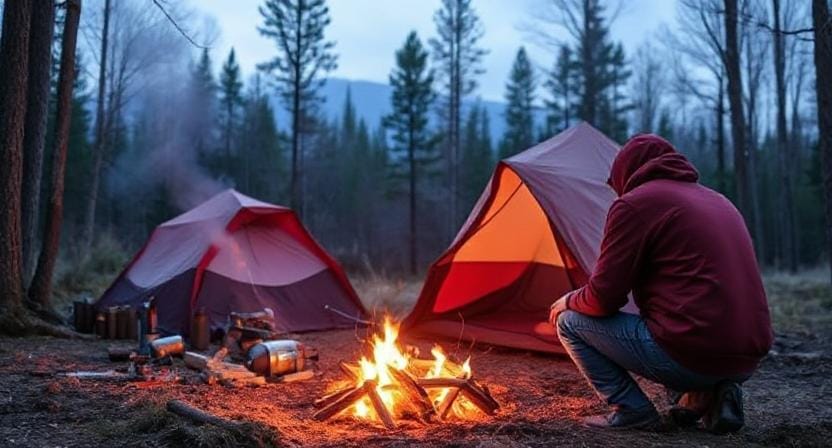
Now that you've assessed potential threats, it's time to create an emergency plan! This isn’t just any old plan; this is the “we’re all going to survive together” plan! Gather everyone who lives with you (yes, even the dog) and discuss what steps you'll take during various emergencies.
By the way, make sure everyone knows how to reach each other if separated—this includes having backup communication methods like texting or using walkie-talkies (because nothing says “prepared” quite like channeling our inner child).
You might also want to designate meeting spots outside of your home where everyone can gather safely after an evacuation. Just don’t forget the snacks; I mean, who wants to meet up without some delicious trail mix?
3. Stocking Up on Supplies: Don’t Forget the Essentials!
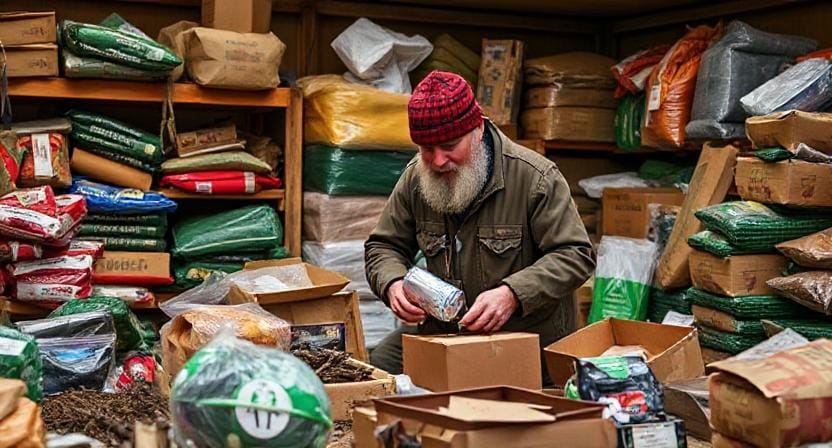
Next up: supplies! It’s time to channel your inner squirrel and start stockpiling those essentials. Think about food items that have long shelf lives (canned goods are great), water (a gallon per person per day), and medical supplies (band-aids should be considered gold!).
Interestingly enough, I learned this lesson during my infamous camping trip when my buddy forgot his own food and decided he could live off granola bars for three days straight—spoiler alert: he couldn’t!
Make sure you have enough non-perishable food and water stored away so you won’t find yourself wondering how many peanut butter sandwiches it takes before they start tasting like cardboard.
And let’s not forget batteries! You’ll need them for flashlights because when darkness falls during an emergency, stumbling around looking for candles is not ideal unless you're auditioning for a slapstick comedy show.
4. Securing Your Home: Safety First!
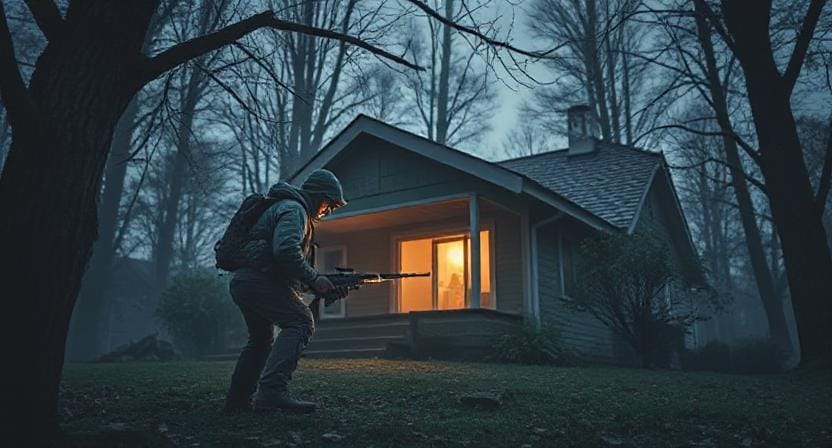
Now onto securing your fortress! This means checking locks on doors and windows because nothing says “welcome” more than leaving everything wide open during a storm—or worse yet, inviting unwanted guests who think they’re entitled to raiding your snack stash.
Consider investing in sturdy shutters or window covers if you're prone to severe weather conditions. And honestly, if there’s ever been a reason to install deadbolts on every door—it’s now!
You want peace of mind knowing that if Mother Nature decides she wants her revenge against humanity, at least she won't waltz right through your front door uninvited.
Also worth noting is keeping important documents safe—like insurance papers or identification—in waterproof containers or bags so they won’t become soggy messes when disaster strikes.
5. Practicing Your Plan: Drill Time!
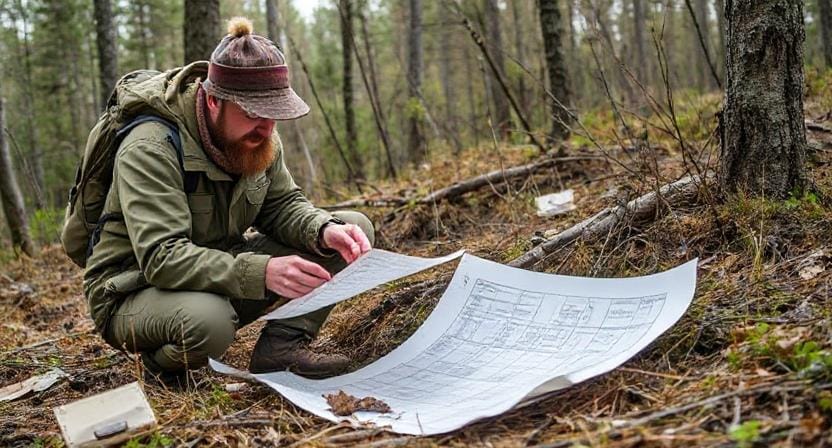
You’ve got the plan; now it’s time for practice! Seriously, running drills may sound silly but trust me—it pays off big time later on when chaos reigns supreme outside those walls of safety you’ve created.
Gather everyone again—pets included—and run through scenarios as though they were real emergencies. Pretend there’s smoke filling up rooms as you navigate through obstacles while trying not to trip over furniture (which inevitably happens).
You’ll thank yourself later when instinct kicks in rather than panic mode taking over!
And hey—it can actually be fun too! Consider rewarding yourselves afterward with pizza or ice cream since nothing motivates kids better than promises of tasty treats after successfully practicing survival skills.
Conclusion
Preparing your home for emergencies can actually be kind of fun! It doesn’t have to be boring or make you feel stressed out. Think of it as a little adventure. You’re just getting your space ready for anything.
Start by looking around your home. Check for things that might be risky. Like, do you have a good flashlight if the power goes out? It’s nice to have a few candles, too. They can make your place feel cozy, even if the lights are off.
Next, making a plan can be super easy. Just sit down with your family or roommates. Talk about what you’d do if something unexpected happens. Maybe it’s a storm or even a little earthquake. Knowing where to meet up in the house or how to reach each other can help everyone feel safer.
Now, let’s talk supplies. Stock up on food and water. Canned soup is awesome because it lasts a long time. And, don’t forget about snacks! Those yummy goodies are great for keeping spirits up during a tough time. Maybe some chips or chocolate? Who can resist that?
Check on your first aid kit, too. You’ll want band-aids, some kids’ pain reliever, and ointment for little cuts. It’s like your tiny superhero kit for when things go wrong!
Making it a family thing can be fun. You can all work together, like you’re prepping for a big camping trip. Laughing while you organize stuff can change everything.
And Aunt Edna? Well, she might just show up with that casserole you can’t quite deal with. But hey, you’ve got other food ready. Just smile and suggest a pizza night instead.
When you get your home ready like this, it helps everyone feel like you can handle whatever comes your way. You’re not just preparing for emergencies. You’re also making your home a cozier, happier place!
Frequently Asked Questions
Why should I identify local risks before preparing my home?
Every area faces different threats, so knowing which hazards are most likely helps you prioritize supplies, gear, and planning appropriately.
What should a simple household emergency plan include?
It should include meeting locations, emergency contacts, how you’ll communicate, and steps to take during evacuation or sheltering.
How much food and water should I store?
Aim for several days of non-perishable food and at least one gallon of water per person per day, plus basic hygiene and first aid supplies.
How can I protect my home during an emergency?
Secure doors and windows, reinforce weak entry points, and keep important documents in waterproof containers or fire-safe storage.
Why are drills important for household readiness?
Practicing builds confidence, reduces panic, and ensures everyone remembers what to do quickly when real emergencies strike.
Should I include backup communication methods?
Yes—power outages and network failures are common, so radios, written lists of contacts, and predetermined meeting spots help maintain connection.
What items are most important in an emergency supply kit?
Food, water, flashlights, batteries, first aid, medications, blankets, and basic tools are core essentials to support short-term survival at home.
Suggested Resources:
Emergency Preparedness Tips
https://www.ready.gov/prepare
How To Build a Disaster Kit
https://www.redcross.org/get-help/how-to-prepare-for-emergencies/survival-kit-supplies.html
Home Safety Checklist
https://www.nfpa.org/Public-Education/By-topic/Home-Safety

Kevin Collier is a seasoned survivalist and expert in prepping and homesteading, contributing to WiseSurvive.com. With a deep-rooted passion for self-sufficiency and outdoor survival skills, Kevin shares practical advice, strategies, and resources to help individuals prepare for any challenge. His informative articles cover a range of topics, from essential survival techniques to sustainable living practices, empowering readers to thrive in any situation. Whether you're a novice or a seasoned prepper, Kevin's insights will inspire you to take charge of your readiness and build resilience for the future.


